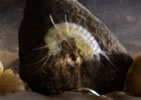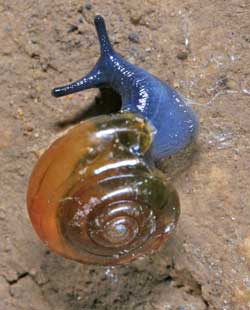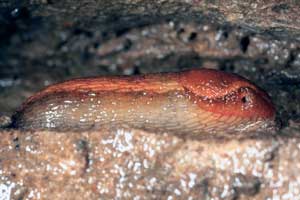 |
Cave Life of The Peak District |
 |
| |
| HOME |
| INTRODUCTION |
| LIFE IN THE ENTRANCE |
| LIFE IN THE CAVE |
| CONSERVATION |
| GLOSSARY |
| ACKNOWLEDGEMENTS |
| Bacteria |
| Fungi |
| Plants, Algae & Protozoans |
| Flatworms |
| Eelworms & Segmented Worms |
| Slugs & Snails |
| Crustacea |
| Insects |
| Spiders & Millipedes |
| Fish & Amphibians |
| Birds |
| Bats |
| Fossils and archeology |
Mollusca - Slugs and Snails |
|||
SLUGS AND SNAILS
The Bivalves (so named because they have two shells (valves) joined together by a hinge) are another group of molluscs found in both fresh and marine waters. Marine bivalves include creatures like the cockles and razor shells etc. Freshwater bivalves rarely occur in caves. Slugs are occasionally found in the threshold of caves. Some species are difficult to identify without examination of the internal anatomy.
|

